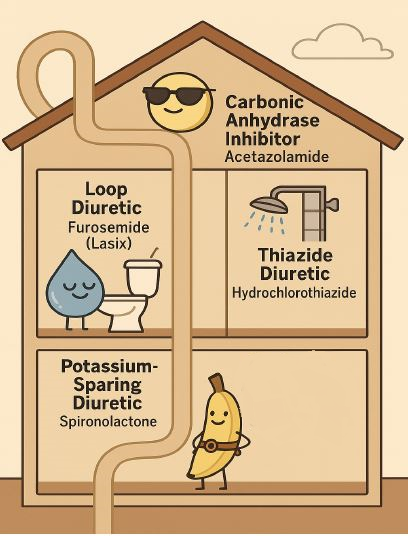by Chris Whitehead
Share

What is the Meaning Behind the 'Es' in Esomeprazole vs. Omeprazole?
Imagine looking at your reflection in a mirror, holding up your hands. Your left and right hands look alike, but they aren't exactly the same—they're mirror images of each other. You can’t place one hand over the other and have them line up perfectly; they’re different in their orientation. In the world of chemistry and medicine, this idea of “mirror images” is brought to life through something called “enantiomers”.
Think of enantiomers as the “left and right hands” of molecules. They have the same basic structure and components but are arranged in such a way that one is a mirror image of the other. This small difference can have a huge impact, especially when it comes to drugs and how they work in our bodies. Our bodies are full of chiral structures (things with "handedness"), so these molecular mirror images can behave in very different ways inside us.
For example, one enantiomer of a drug might be the perfect fit for its target (receptor) in the body, effectively treating a condition or illness. Meanwhile, its mirror image might not fit as well, act differently, or even cause side effects. That’s why you might see some familiar drug names with an "es-" in front—it's not just there to sound fancy. It’s actually a clue that this version of the drug is a specifically chosen “hand” or enantiomer.
Take omeprazole and esomeprazole, for instance. At first glance, these names look almost the same, but the “es-” tells us something important: esomeprazole is the “S-enantiomer” of omeprazole, a carefully selected mirror image designed to work more effectively in our bodies. Just like using the right hand for the right task makes things easier, choosing the right enantiomer can make a drug work better and reduce unwanted side effects.
In the world of medicine, understanding and picking the right enantiomer helps create more precise and safer treatments, turning a familiar medication into a more finely tuned tool for healing. Every time you see an "es-" prefix, it’s a little hint that science is taking another step forward in making medications work better for us.
Now for a deeper dive
Many drugs exist as mixtures of two enantiomers, called a racemic mixture. Each enantiomer can have different biological activity, potency, and side effects. By isolating a specific enantiomer, pharmaceutical companies can create a drug that is potentially more effective and has fewer side effects compared to the racemic mixture.
Back to Omeprazole vs. Esomeprazole:
- Omeprazole (Prilosec): This is a proton pump inhibitor (PPI) used to reduce stomach acid production. Omeprazole is a racemic mixture, meaning it contains two enantiomers (mirror-image molecules) in equal proportions.
- Esomeprazole (Nexium) : This is the "S-enantiomer" (the 'es-' prefix comes from 'S') of omeprazole. By isolating the S-enantiomer, esomeprazole is designed to be more effective and have more predictable pharmacokinetics (how the drug is absorbed, distributed, metabolized, and excreted in the body) than the racemic mixture found in omeprazole.
More on Using a Single Enantiomer
- Increased Potency or Efficacy: Sometimes, one enantiomer is more active or effective than the other. For instance, esomeprazole is often considered to provide more consistent acid suppression compared to omeprazole.
- Reduced Side Effects: The non-active enantiomer in a racemic mixture might contribute to side effects or have other undesirable effects. Using a single enantiomer can reduce such risks.
- Patent Extension: Developing a single enantiomer can also be a strategy for pharmaceutical companies to extend their patents and market exclusivity, as it may be considered a "new" drug formulation.
Here are some other drugs with the "es-" prefix, indicating that they are enantiomers of existing drugs:
- Escitalopram (Lexapro)
- Original Drug: Citalopram (Celexa)
- Use: Antidepressant (Selective Serotonin Reuptake Inhibitor, SSRI)
- Difference: Escitalopram is the S-enantiomer of citalopram and is considered to be more potent and may have a more favorable side effect profile.
- Eszopiclone (Lunesta)
- Original Drug: Zopiclone (Zimovane)
- Use: Sedative/Hypnotic for insomnia
- Difference: Eszopiclone is the S-enantiomer of zopiclone and is designed to improve sleep onset and maintenance with potentially fewer side effects.
- Eslevodopa
- Original Drug: Levodopa
- Use: Used in combination with other medications for Parkinson's disease
- Difference: Eslevodopa is an enantiomerically enriched form of levodopa and may provide a more predictable therapeutic response.
Why Don’t we just begin with the “Es” Version then???
Drug companies often begin with a racemic mixture (containing both enantiomers) rather than a single enantiomer for several reasons:
Cost and Complexity of Development
- Synthesis Challenges: Producing a single enantiomer can be more complex and expensive compared to synthesizing a racemic mixture. The processes required to separate and isolate a single enantiomer are often more time-consuming and require specialized techniques.
- Initial Screening: During the early stages of drug development, screening is often done on racemic mixtures to assess the overall biological activity of a compound. It’s simpler and faster to produce a racemic mixture to test the general efficacy and safety of a new drug.
Historical Practices
- Historically, the technology and understanding needed to isolate and evaluate single enantiomers were less developed. Many older drugs were approved as racemic mixtures because that was the standard practice, and the focus was primarily on overall efficacy rather than the specific activity of each enantiomer.
Discovery Process
- Unknown Activity: Initially, the effects of individual enantiomers might not be known. The drug discovery process often involves exploring a wide range of compounds to find one with therapeutic potential. Only after identifying a promising racemic mixture might researchers investigate the specific properties of its enantiomers.
- Chiral Switch Strategy: Sometimes, a racemic mixture is marketed first to gauge its overall effectiveness and safety in a large population. After the drug's general properties are understood, companies may decide to develop a single enantiomer version (known as a "chiral switch") if it has a more favorable profile.
Regulatory Considerations
- Developing and obtaining regulatory approval for a single enantiomer can involve additional studies to prove that it offers significant advantages over the racemic mixture. This might require more time and resources upfront. Initially, companies might focus on getting a racemic drug approved to bring it to market faster.
Commercial Strategy
- Patent Strategy: Starting with a racemic mixture and later developing a single-enantiomer version can extend the commercial life of a drug. When the patent on the original racemic mixture is nearing expiration, a single-enantiomer version can be marketed as a new product with extended patent protection, potentially maintaining market share and profits.
- Market Testing: Releasing a racemic drug allows a company to establish market presence, gather real-world data on efficacy and safety, and build a patient base. If one enantiomer is subsequently found to offer significant benefits, a new product can be marketed effectively based on that data.
Therapeutic Considerations
- Balanced Activity: In some cases, both enantiomers may contribute positively to the therapeutic effects or may balance each other out in terms of efficacy and side effects. Developing a racemic mixture can thus provide a broader therapeutic effect.
While single-enantiomer drugs can offer advantages in terms of potency, efficacy, and safety, developing them from the outset may not always be the most practical or cost-effective approach. Pharmaceutical companies often weigh the costs, potential benefits, and strategic considerations when deciding whether to start with a racemic mixture or a single enantiomer.
"The Enantiomer's Advantage: Emma's Journey to Better Health"
In a bustling city, where life moved as quickly as the stream of cars outside, lived Emma, a dedicated professional who often found herself facing the complexities of modern medicine. Despite her demanding job, she managed her health with care, taking medications to alleviate her chronic acid reflux. One day, Emma found herself in a predicament: her current medication wasn’t working as well as it used to. She’d heard about a new medication from a friend but wasn’t sure if it was right for her.
She decided to consult with her trusted pharmacist, Alex, who was known for his expertise and ability to simplify even the most complicated drug information. Emma walked into the pharmacy, clutching her old prescription bottle and a flyer she had picked up about esomeprazole.
Alex greeted her with a warm smile. “How can I help you today, Emma?”
“I’ve been taking omeprazole for years, but it doesn’t seem to be working as well anymore. I came across something called esomeprazole. What’s the difference between them?”
Alex nodded, ready to unravel the mystery. “Ah, the difference between omeprazole and esomeprazole is actually quite interesting. They’re related, but they’re not the same.”
He continued, “Imagine holding up your left and right hands. They look very similar but are mirror images of each other. In chemistry, we call these mirror-image molecules ‘enantiomers.’ Omeprazole is a racemic mixture, meaning it contains both of these enantiomers in equal parts. Esomeprazole, on the other hand, is just one of those enantiomers—the S-enantiomer. That ‘es-’ prefix you see stands for ‘S-enantiomer.’”
Emma looked intrigued. “So, what does that mean for me?”
Alex explained, “Because esomeprazole is the specific enantiomer, it might work better for you. It’s designed to be more effective and have more predictable effects. By isolating this particular enantiomer, it can provide more consistent acid suppression and potentially fewer side effects compared to the racemic mixture of omeprazole.”
Emma listened attentively, realizing that this small difference could make a significant impact. “So, should I switch to esomeprazole?”
Alex smiled reassuringly. “It’s worth a try. Many patients find that the S-enantiomer offers better results, but it’s always good to monitor how you respond to it. It’s not uncommon for patients to need adjustments in their treatment over time.”
Feeling more informed and hopeful, Emma thanked Alex and left the pharmacy with her new prescription. As she started taking esomeprazole, she noticed a marked improvement in her symptoms, her reflection in the mirror a bit brighter with the renewed relief she felt.
Emma appreciated not just the effectiveness of her new medication but also the clarity Alex had provided. It was a small yet significant reminder of how understanding the nuances of medication could lead to a more effective and personalized treatment plan.
And so, in the world of medicine, where the smallest details could make all the difference, Emma's journey through enantiomers and their impacts became a testament to the importance of knowledge and expert advice in achieving better health outcomes.
Medications for Seasonal Allergies: A Comprehensive Guide for Pharmacists and Pharmacy Technicians Seasonal allergies, also known as hay fever or allergic rhinitis, are a common condition that affects millions of people worldwide. As pharmacists and pharmacy technicians, understanding the medications used to manage these allergies is essential to provide optimal patient care. This blog post
A Restful Night: Finding the Right Medication for Insomnia Samantha had been struggling with insomnia for months. Every night, she would lie in bed, staring at the ceiling, unable to drift off. Her days were filled with exhaustion, and her performance at work was starting to suffer. Desperate for relief, she decided to visit her





